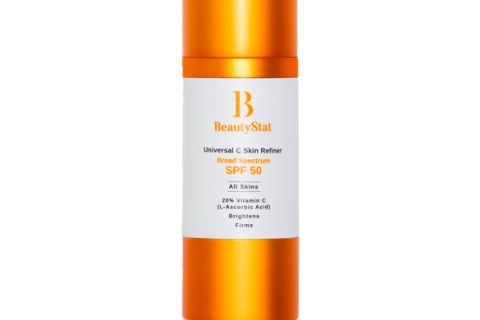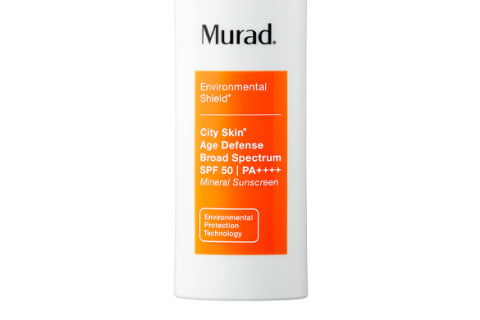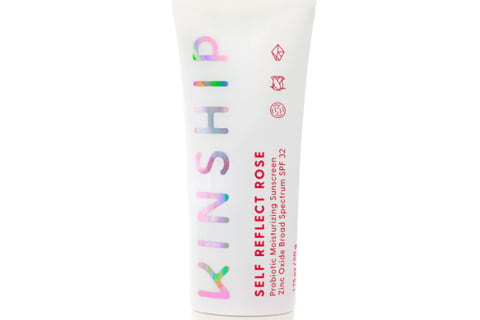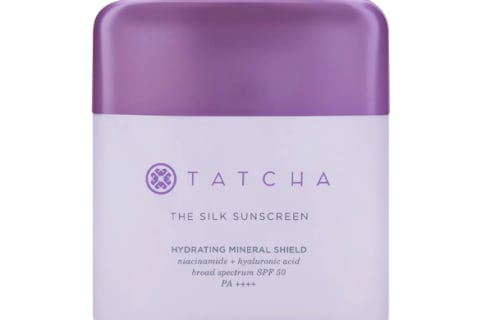Advertisement
Wait, What Is Butyloctyl Salicylate & Why Is It In My Sunscreen?

Oh, the heated mineral versus chemical sunscreen debate. Most people either have a zinc oxide or bust! mentality, or balk at anything with a whisper of a white cast. (For the record: We typically recommend mineral formulas, though ultimately the best sunscreen is the one you'll actually wear.)
Recently, however, I caught wind of a very jaw-dropping fact: A number of mineral sunscreens actually contain chemical UV filters. I honestly thought it was clickbait. (I mean, I saw it on TikTok.) But after some more reporting, it turns out the rumor does have legs—a bunch of mineral sunscreens do include a sneaky chemical filter called butyloctyl salicylate.
If you feel betrayed by your favorite SPF, you're not alone, but butyloctyl salicylate is not as nefarious as you might think (big sigh). Ahead, find our investigation.
What is butyloctyl salicylate & why is it in sunscreen?
"Butyloctyl salicylate is a synthetic ingredient that helps improve the aesthetics and performance of sunscreen products," says cosmetic chemist Ron Robinson, founder of BeautyStat. "It does so by helping to solubilize and stabilize sunscreen active ingredients, as well as provide emollience. It also has UV absorption capabilities in its own right, which may help further boost the SPF level of the product."
That's why some refer to it as an "SPF booster." It helps stabilize the sunscreen, improve its look and feel, and boost its UV-absorbing power. It does the latter by absorbing UV light and triggering a chemical reaction, which then transforms the UV into heat.
If that all sounds very familiar to chemical sunscreen filters—as opposed to physical filters, which create a barrier to shield the vulnerable skin below—well, that's because they are pretty much the same thing. In fact, butyloctyl salicylate "is very similar in chemical structure to octisalate, which is an approved sunscreen active in the U.S. and many other countries," says product developer Emily Philen, senior manager of scientific affairs at Murad.
"The official name for octisalate is ethylhexyl salicylate, which, as you can tell from the name, is butyloctyl salicylate's relative," writes cosmetic chemist Michelle Wong, Ph.D., on her website, Lab Muffin Beauty Science. And the "salicylate" portion is the component that actually absorbs the UV light, which is the same in both molecules. "The bit that's different doesn't actually interact with UV at all," she adds.
So why isn't it considered an SPF active, you might ask? Well, sunscreen actives must go through a very long and arduous process to become regulated by the FDA. I highly suggest reading Wong's full post, which dives deeper into the ins and outs of sunscreen regulation. But the gist is that there's a lot of legal red tape, and for some reason butyloctyl salicylate hasn't been registered yet.
Why do mineral sunscreens have it?
And here's the thing: A lot of mineral sunscreens contain this chemical filter! In the process of researching and writing this story, I noticed butyloctyl salicylate on a ton of ingredient lists (way more than you'd think), ranging from bigger sunscreen juggernauts to smaller indie brands.
That's not inherently a bad thing, as butyloctyl salicylate is generally recognized as safe (more on that in a moment). But "It can be considered deceptive if a product claims to be 100% mineral sunscreen yet it contains this ingredient that is known to absorb UV rays," notes Robinson.
Personally, I don't fault the brands who do claim to be 100% mineral yet contain this chemical filter. As Wong writes, butyloctyl salicylate is very widespread in the industry, so much so that some brands might not even realize it's in their own formulas.
That said, it is a bit fishy if a brand intentionally demonizes all chemical sunscreen filters yet sneaks one in their formula. Some chemical filters, like oxybenzone and octinoxate, are associated with skin health concerns1 and deserve their criticism, but not all chemical filters are inherently bad (or avoidable, as it turns out).
We do typically recommend mineral sunscreens, but allow me to repeat: The best sunscreen is the one you'll actually wear, be it a chemical or mineral formula.
Is it safe?
Butyloctyl salicylate is generally regarded as safe. "The Cosmetic Ingredient Review Expert Panel (CIR Panel) published a safety assessment of salicylic acid and 16 salicylates (including butyloctyl salicylate), concluding that they are safe when formulated [in skin care]," notes Philen. Even the Environmental Working Group (EWG) considers it a "low hazard" ingredient present in many EWG-approved formulas.
The only thing to note is that this ingredient is a salicylate, just like octisalate. So if you are sensitive or allergic to octisalate, you might run into the same issues with butyloctyl salicylate. Again, these are pretty similar molecules—that doesn't mean you absolutely will face sensitivities, but it's something to note if you do tend to steer clear of octisalate formulas.
That said, you may want to peek at the "inactive" ingredients list on your sunscreen formulas, especially if you're sensitive to salicylates. Those with allergies will likely do a thorough check anyway for potentially irritating players, but let this serve as a friendly reminder to vet the entire formula (not just actives) before slathering on.
Best sunscreens without butyloctyl salicylate
Let me be clear: Butyloctyl salicylate is not a red flag. If your mineral sunscreen has it, that's fine! It's only an issue, ethically, if the brand villainizes chemical filters without realizing they do, in fact, contain an ingredient structurally similar to octisalate.
But if you'd like to avoid it for whatever reason (sensitivities, perhaps), find some butyloctyl-salicylate-free options below.
The takeaway
Yes, some mineral sunscreens do technically contain this chemical filter—but it shouldn't deter you from using the formula unless you have any sensitivities to salicylates. It's very common for a sunscreen with zinc oxide to include other players to help with the sensoriality of the product (otherwise, says Philen, it would feel like chalk). But butyloctyl salicylate has the ability to absorb UV rays in addition to its emollient properties—so mineral sunscreens that do include it aren't actually 100% mineral.
Is that bad? Not necessarily! Brands (and consumers) that throw shade to chemical filters just might want to take a closer look at their own inventory.



